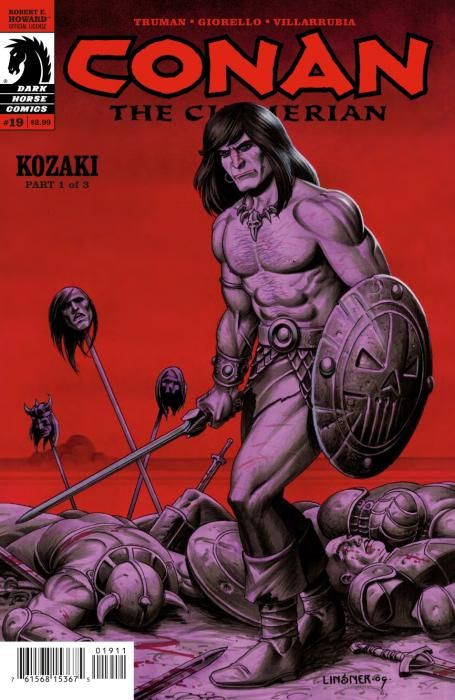Well, this is certainly a Conan comic book. It's not a completely mindless one -- this isn't "Conan the Barbarian," it's "Conan the Cimmerian," which automatically implies a certain level of sophistication. For example: Conan wears clothes that almost cover his body at one point in this issue. No pants though. Not yet.
And this issue seems to strive toward an exploration of some themes: we get a sense of Conan's disappointment with himself as he struggles to maintain his composure in the opening sequence, we get an examination of power and exploitation, we get a sense of Conan's nobility as he tries to do what's right. But it's mostly a pulp sword and sorcery tale of lust and greed. Sex and death and blood and battle. It's about sweaty men doing nasty things while speaking in arch diction. It's about women as victims -- half-mid-century fantasy erotica, and half blatant exploitation. Once again, it's a Conan comic.
The art is muscular, illustrative, evocative. Tomas Giorello draws like the cursed son of Ian Gibson, Gene Colan, and John Buscema, forever destined to draw the types of stories that would have once graced the ink-stained pages of dime novels and cheap magazines. But like Gibson, his cartooning has a flair for expression and nimble curves. Like Colan, his shadows melt and blend into the landscape. And like Buscema, his sturdy characters stand their ground firmly, but move with graceful power.
The art is better than the story it illustrates.
Timothy Truman begins the issue with a promising opening. The starved Conan is crawling through a strange swamp, hallucinating about his superior -- or experiencing an even stranger phantom presence -- facing a wrath, real or imagined, from beyond the grave. But drama soon gives way to exposition, and we begin a sequence of events that is little more than illustrated storybook cliches. Fighting and pillaging, with captions telling us of places like "Koth" and "Zamora" and "Hyrkanian Turan." It becomes a tedious list rather quickly.
The plot becomes more interesting once we shift to the wondrous city of Akif -- a kind of Middle Eastern paradise (or Middle Eastern Las Vegas) -- but, by then, the issue has become a limp series of events. A chronicle, more than an emotionally compelling narrative.
Giorello's art is lush enough for a visit, but there's not a lot here to make me come back for more.

